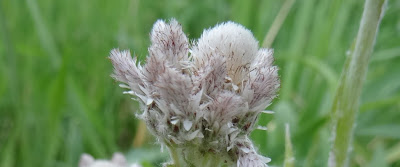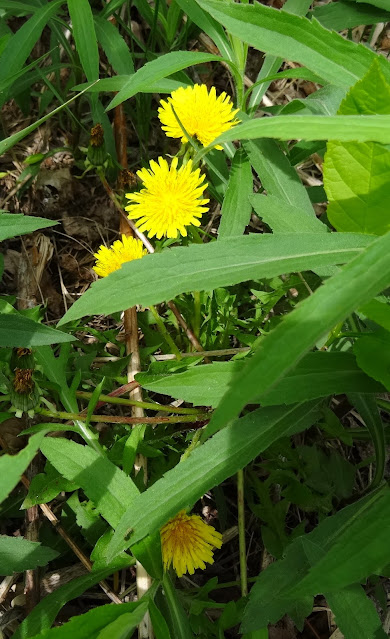On 5/20/2022 we peeked into the nest box, and found several eggs. Not countable, because of the feathers in the box meant to hide the eggs from predators. Since then I have peeked several times more.
6/28/2022
On 5/20/2022 we peeked into the nest box, and found several eggs. Not countable, because of the feathers in the box meant to hide the eggs from predators. Since then I have peeked several times more.
6/19/2022
6/17/2022
6/12/2022
smooth penstemon
Foxglove Beardtongue, Penstemon digitalis (also called Smooth Penstemon) has white flowers that bloom for a month or longer.
The tubular flowers attract long-tongued bees such as bumblebees and mason bees, as well as hummingbirds. This is one of the plants we are trying to encourage in the riparian area around the pond.
Good for pollinators!
6/11/2022
iris
6/08/2022
blackbird nest
The Red-winged Blackbird Agelaius phoeniceus gave away the secret location of their nest by screeching at us as we walked around the pond. As I came near the spot, he warned me vocally and hit my hat with his feet as he flew by.
6/06/2022
sora chicks
6/05/2022
6/03/2022
6/01/2022
pussytoes 6-1
5/21/2022
early purple ivy blooms
creeping charlie, gill-over-the-ground, alehoof,
tunhoof, catsfoot, field balm, or run-away-robin.
I admire the shape and texture of the leaves, and
used them in a botanical design project.
5/20/2022
nest box peek
Tree Swallows lay eggs and
disguise them by sticking feathers
barb-down so the fluffy vanes curl over the contents of the nest.
5/18/2022
5/12/2022
nectar and pollen
sora, master of disguise
My new favorite bird! I just discovered the Sora Porzana carolina (a very secretive wetland bird) this Spring. I watch a pair every day, hunting at the edge of the pond. They think the mottled-pattern camouflage feathers makes them hard to spot. But the bright yellow bill gives them away. (see post on 4/24/2022)
5/11/2022
strutting blackbird
The blackbird was foraging among the short grasses near the pond. A female, recently arrived after migrating, landed on a branch of swamp willow. The male saw her and started displaying his handsome epaulets. He walked toward her with his feathers fluffed out and tail partly spread. As he proceeded, he lifted the leading edge of each wing so that the red shoulder patches were puffed up, appearing bigger. She flew to another small tree; he followed among the willow sprouts, displaying his male beauty to impress her.
(Red-winged Blackbird males have colorful upperwing coverts of red bordered with yellow on the bend of each wing. He will use the colorful display to threaten other birds, defend his territory, or attract a mate.)
5/08/2022
muskrat claws
Often we can see a muskrat swimming back and forth in the pond, harvesting plants and taking food home to the family. Muskrats Ondatra zibethica eat the roots, stems, leaves, and fruits of many water plants such as cattail, rushes, smartweed, duck potato, horsetail, sedges, and willow sprouts. They are strong swimmers due to their two long back feet and five webbed toes. For grasping and harvesting food, they have developed smaller front feet with four fingers with claws and a small thumb. By living near the pond, muskrats control plant growth, provide open spaces for new plants to grow, and make space for other animals to build their nests.
5/04/2022
5/02/2022
blue-winged teal
4/26/2022
green sprouting
After a late, cold and windy Spring season, there is finally some green leaves sprouting in the wetland surrounding the pond. These are the beginning leaves of Golden Alexanders.
4/24/2022
Sora
This very secretive bird, that usually hides among vegetation, today revealed itself at the edge of the pond! I hope this one will find a spot to nest among the dense vegetation of rushes and sedges.
Not often seen in the open, the Sora is a small chubby bird of freshwater shallow areas with plants such as cattails, sedges and rushes. Sora Porzana carolina is brown and gray with a mottled patterned body, 8-10" long. Despite their camouflage feathers, the bright yellow bill gives them away. It is stubby, thick, glowing yellow in a gray face with black mask.
Soras feed by pecking at the water surface for seeds, aquatic insects, or invertebrates. Long toes help them to rake through submerged vegetation for food items, and help them walk on floating mats of plants. They nest among dense plants at the pond edge.
4/19/2022
crow on rocks
This crow was trying to fetch seeds from the water surface by standing on two rocks.
4/15/2022
dabblers and divers
The pond area is bustling with birds arriving! Several species of ducks have stopped for a meal or a day of rest on migration. I marvel at how they tolerate one another in this small spot of respite. Occasionally we hear honking or see disputes, but mostly the creatures get along.
Animals have adapted their method to feed in different ways. For instance, we saw Mallards feeding near Hooded Mergansers. Mallards and Blue-winged Teal are ‘dabblers' – they dip their beak and head into the water to munch on shallow-water plants. Mergansers are ‘divers' – they dive totally under the water to eat plants growing in deep water.






























